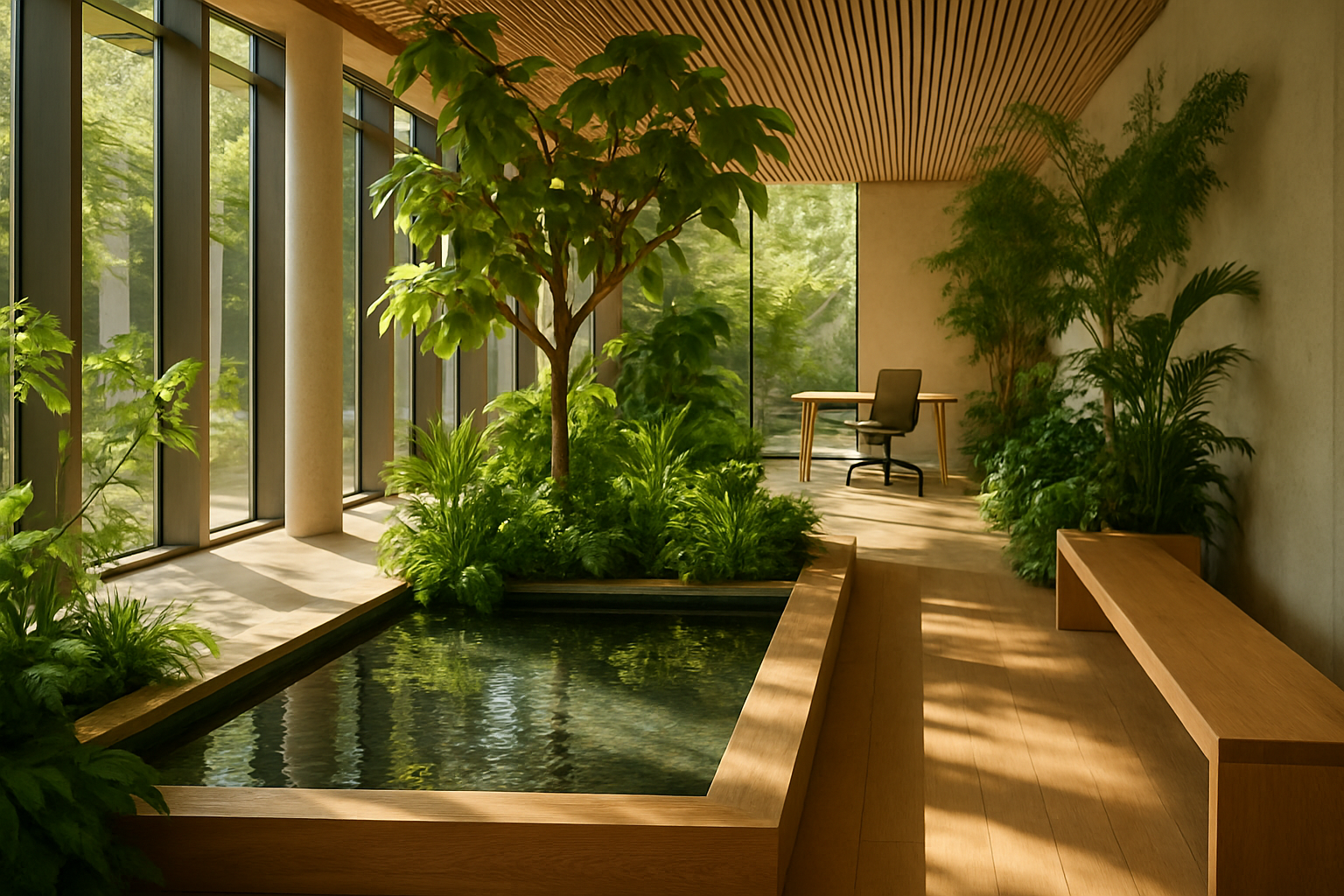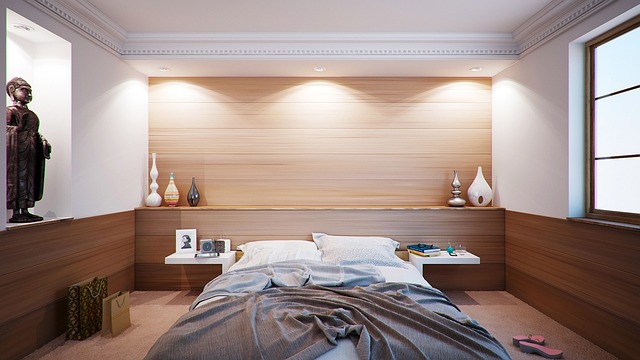Biophilic Design: Enhancing Health Through Nature-Inspired Spaces
Imagine walking into a room filled with lush greenery, natural light, and the soothing sound of flowing water. How does it make you feel? Calm, refreshed, and energized? This is the power of biophilic design, a revolutionary approach to creating spaces that reconnect us with nature and promote overall well-being.

The Origins of Biophilic Design
Biophilic design is rooted in the concept of biophilia, a term coined by psychoanalyst Erich Fromm in 1973 and later popularized by biologist Edward O. Wilson. Biophilia refers to humans’ innate affinity for nature and living systems. This evolutionary connection has shaped our physiological and psychological responses to natural environments over millions of years.
The modern application of biophilic design principles in architecture and interior spaces began to gain traction in the 1980s. Pioneers like Stephen Kellert and Judith Heerwagen started exploring how incorporating natural elements into built environments could enhance human health and productivity. Their work laid the foundation for what has now become a growing field of research and practice.
The Science Behind Biophilic Design
Numerous studies have demonstrated the positive effects of biophilic design on human health and well-being. Research has shown that exposure to natural elements can reduce stress, lower blood pressure, improve cognitive function, and enhance mood. These benefits are attributed to our evolutionary predisposition to thrive in natural settings.
One landmark study conducted by Roger Ulrich in 1984 found that hospital patients with views of nature recovered faster and required less pain medication than those facing brick walls. This groundbreaking research sparked further investigations into the healing power of nature-inspired environments.
More recent studies have explored the impact of biophilic design in various settings, from offices to schools. For example, a 2015 study by Human Spaces found that employees working in environments with natural elements reported a 15% higher level of well-being and were 6% more productive than those in environments devoid of nature.
Key Elements of Biophilic Design
Biophilic design incorporates various strategies to bring nature into our built environments. These elements can be categorized into three main types:
-
Direct nature experiences: This involves incorporating actual natural elements into spaces, such as plants, water features, and natural light.
-
Indirect nature experiences: These include representations of nature, like nature-inspired artwork, natural materials, and biomorphic forms.
-
Space and place conditions: This category focuses on spatial configurations that mimic natural environments, such as creating prospect and refuge spaces or incorporating natural patterns and rhythms.
Some specific biophilic design elements include:
-
Living walls and indoor plants
-
Natural light and circadian lighting systems
-
Water features
-
Natural materials like wood and stone
-
Nature-inspired patterns and textures
-
Views of nature or nature-inspired artwork
-
Organic shapes and forms in architecture and furniture
Health Benefits of Biophilic Spaces
The implementation of biophilic design principles can lead to a wide range of health benefits:
-
Stress reduction: Exposure to natural elements has been shown to lower cortisol levels and activate the parasympathetic nervous system, promoting relaxation and reducing stress.
-
Improved cognitive function: Studies have found that biophilic environments can enhance attention, creativity, and problem-solving skills.
-
Enhanced mood and well-being: Nature-inspired spaces have been linked to increased feelings of happiness, reduced anxiety, and improved overall emotional well-being.
-
Better sleep quality: Exposure to natural light and circadian-friendly lighting can help regulate our sleep-wake cycles, leading to improved sleep quality.
-
Increased physical activity: Biophilic design can encourage movement and physical activity by creating inviting spaces that promote walking and other forms of exercise.
Implementing Biophilic Design in Everyday Life
While large-scale architectural projects often showcase the most dramatic examples of biophilic design, there are many ways to incorporate these principles into our everyday environments:
-
Bring nature indoors: Add plants to your living and working spaces. Even small potted plants can make a significant difference in air quality and mood.
-
Maximize natural light: Arrange your furniture to take advantage of natural light sources and use light-filtering window treatments instead of heavy curtains.
-
Use natural materials: Incorporate wood, stone, and other natural materials into your decor and furniture choices.
-
Create nature views: If you don’t have access to real nature views, consider using nature-inspired artwork or digital displays of natural scenes.
-
Incorporate natural sounds: Use sound machines or apps that play nature sounds like flowing water or bird songs to create a calming atmosphere.
-
Choose nature-inspired colors: Opt for a color palette that reflects natural hues, such as earthy tones and greens.
-
Introduce organic shapes: Select furniture and decor with curved, organic forms that mimic natural shapes.
Biophilic Design in Action: Success Stories
-
The Amazon Spheres: These iconic glass domes at Amazon’s Seattle headquarters house over 40,000 plants from around the world, creating a lush, nature-inspired workspace for employees.
-
Parkroyal Collection Pickering, Singapore: This hotel features extensive sky gardens, reflecting pools, and waterfalls, seamlessly blending architecture with nature.
-
Khoo Teck Puat Hospital, Singapore: Designed with healing gardens, green roofs, and abundant natural light, this hospital has become a model for biophilic healthcare design.
-
Bullitt Center, Seattle: Known as one of the greenest commercial buildings in the world, it incorporates extensive natural lighting, outdoor terraces, and nature-inspired design elements.
-
Apple Park, California: Apple’s new headquarters features a central courtyard with over 9,000 native and drought-resistant trees, promoting biodiversity and employee well-being.
As we continue to spend more time indoors, the importance of biophilic design in promoting health and well-being cannot be overstated. By reconnecting with nature through our built environments, we can create spaces that not only look beautiful but also actively contribute to our physical and mental health. Whether through large-scale architectural projects or simple home improvements, embracing biophilic design principles offers a powerful way to enhance our quality of life and foster a deeper connection with the natural world.





